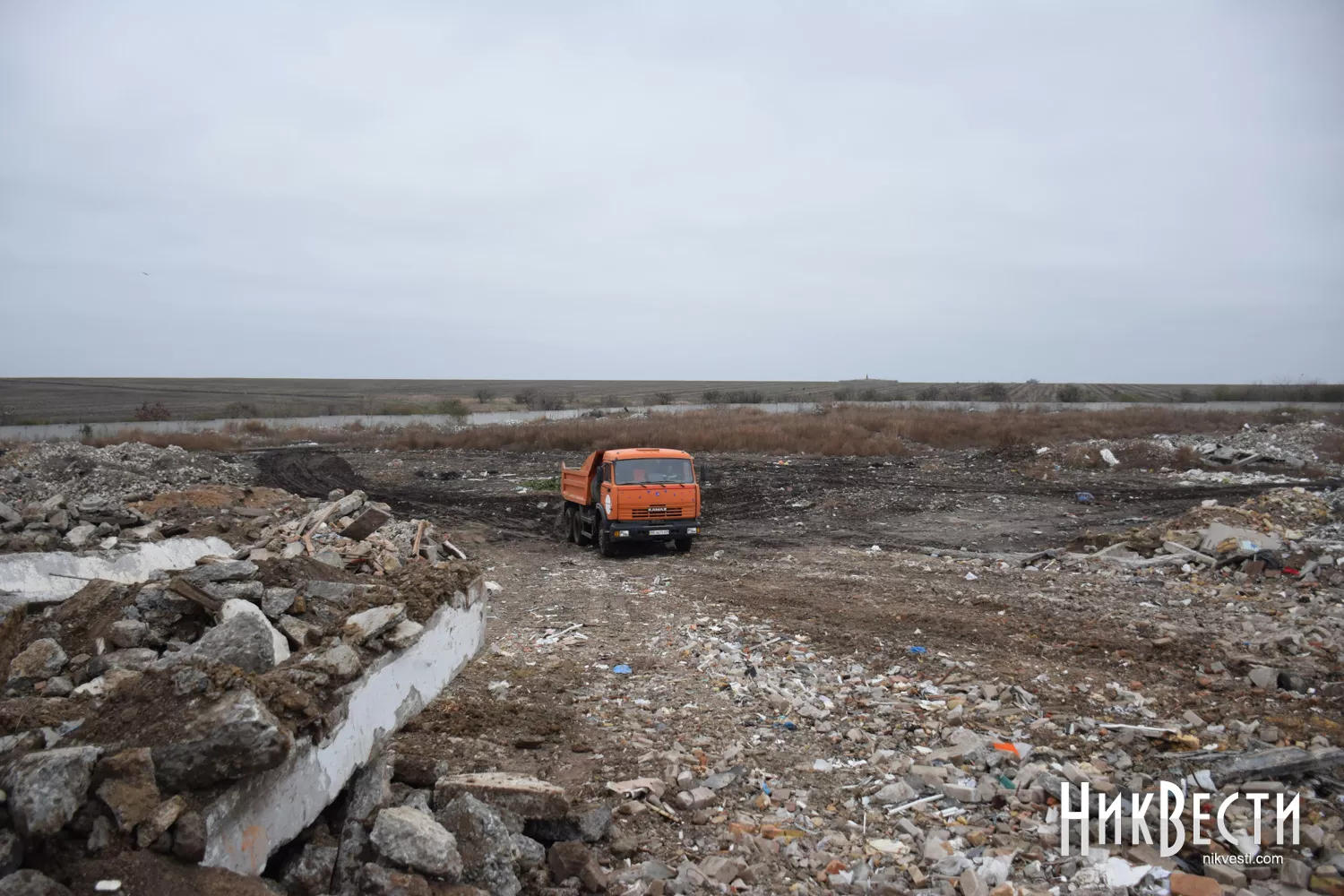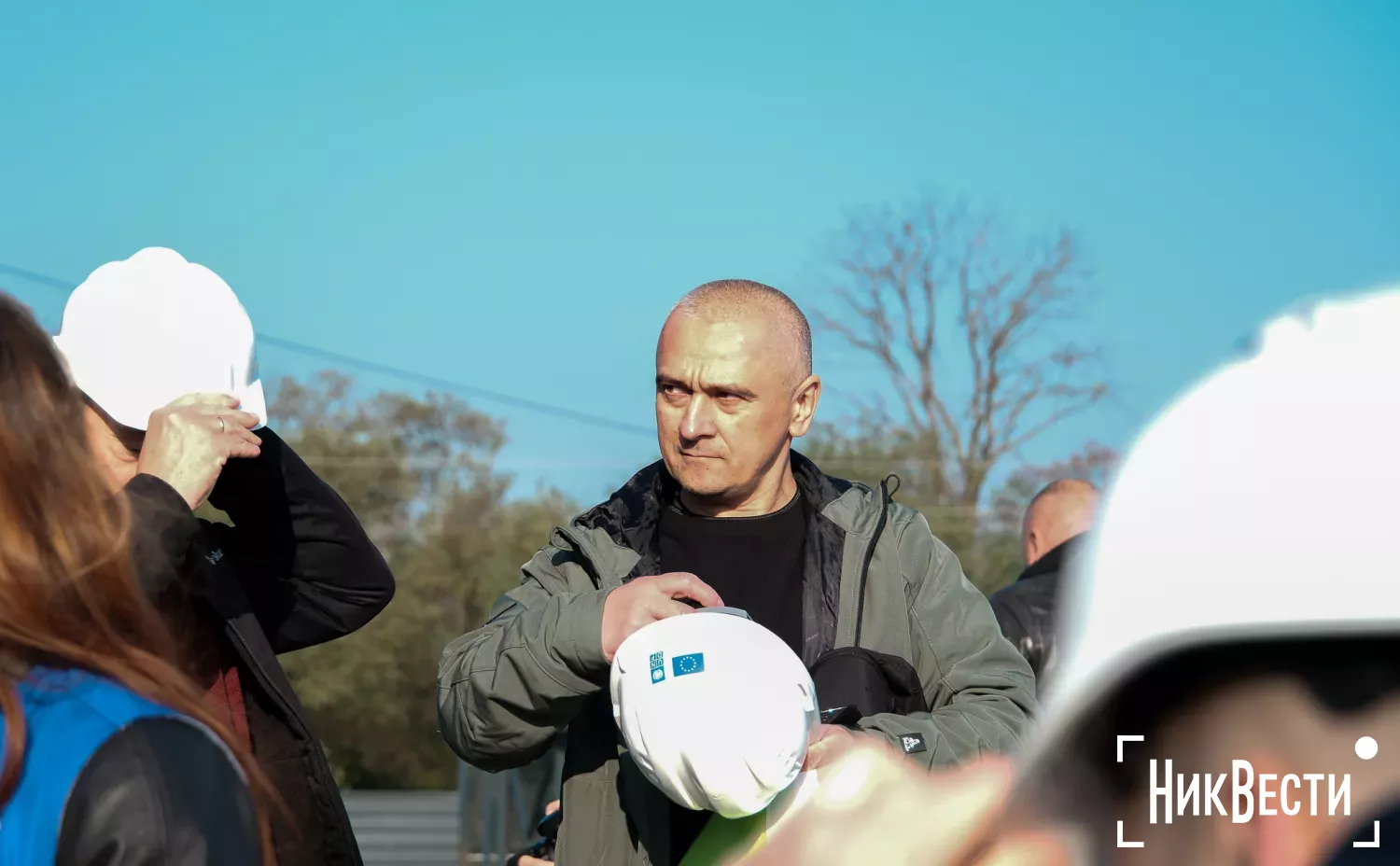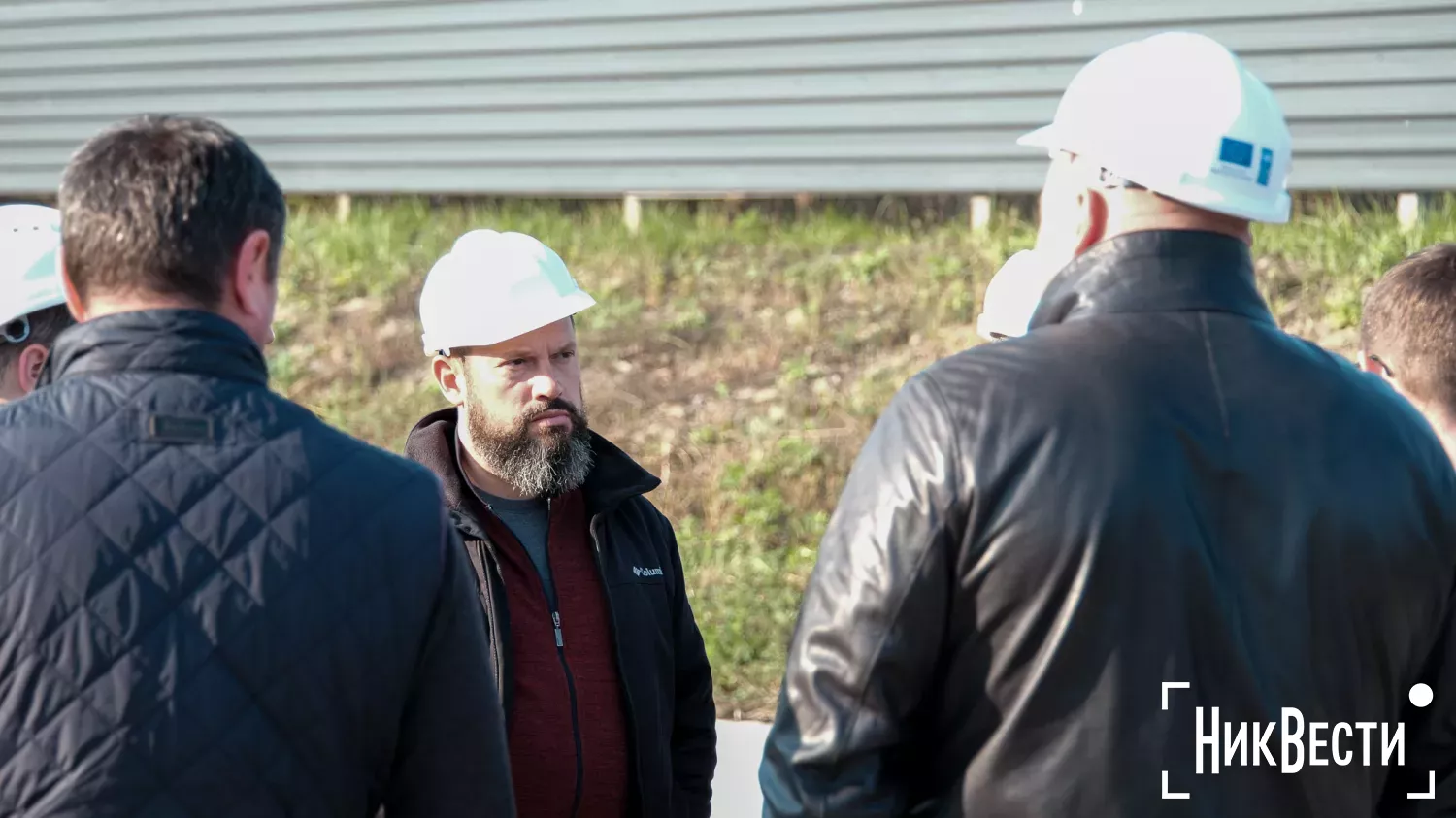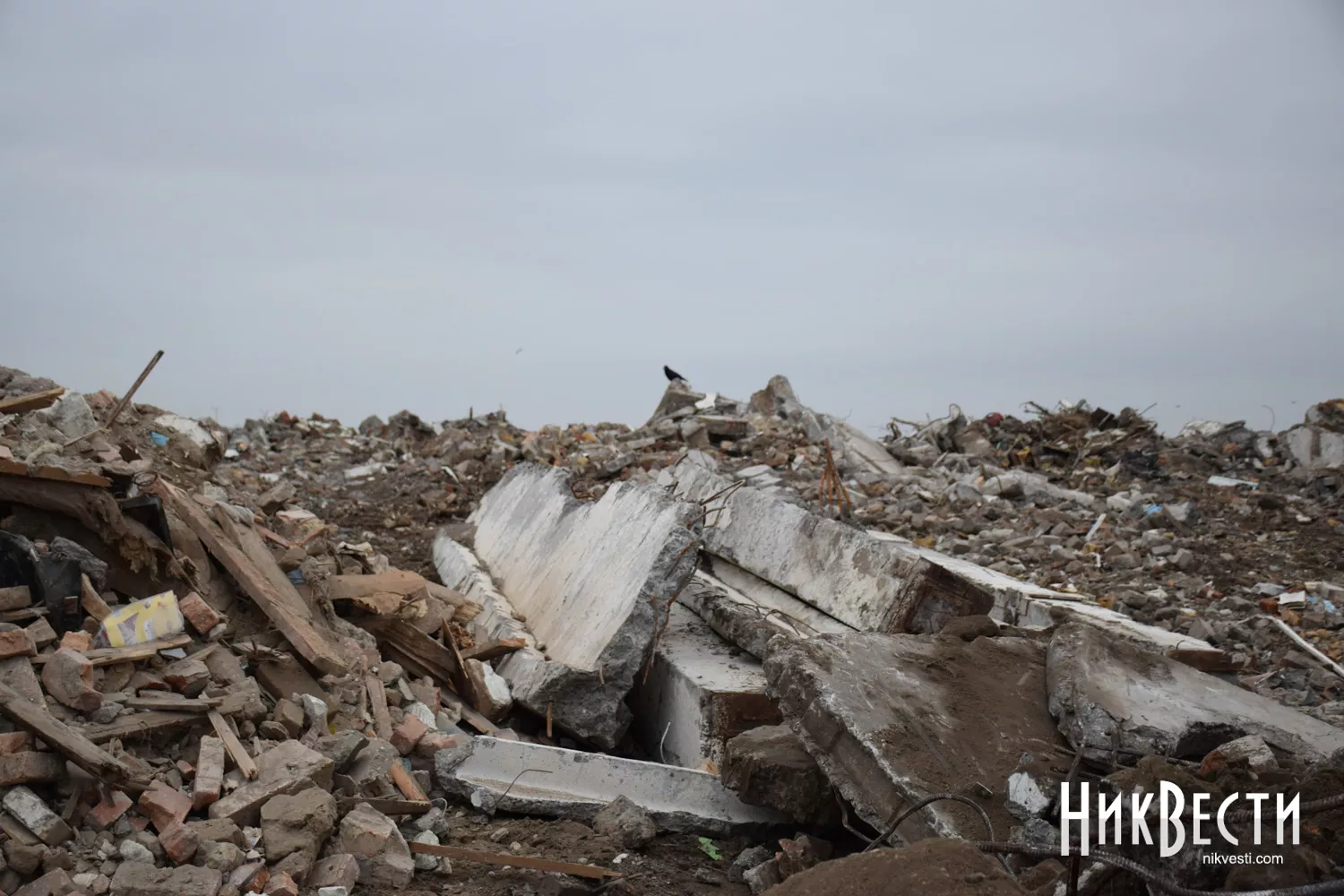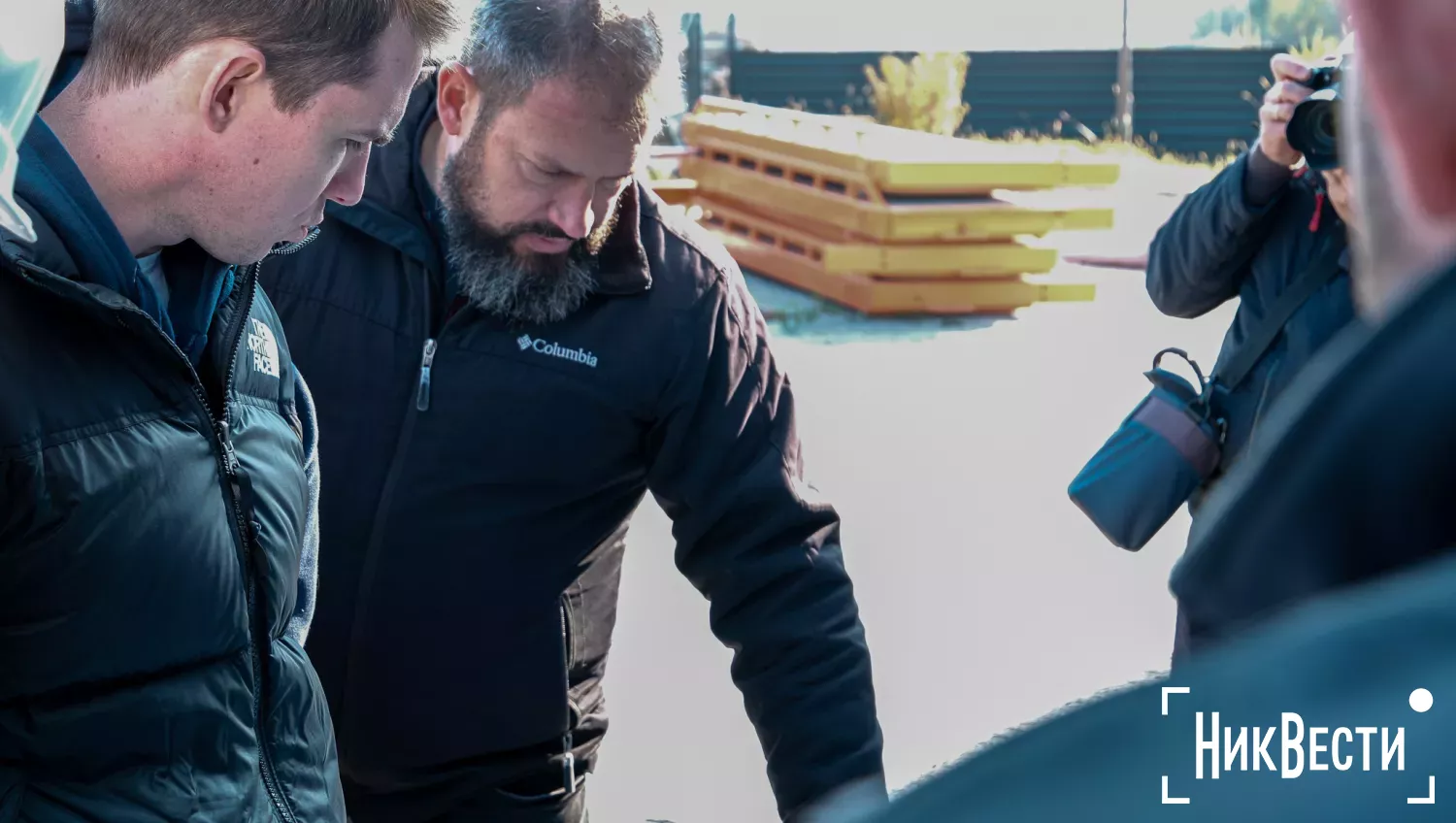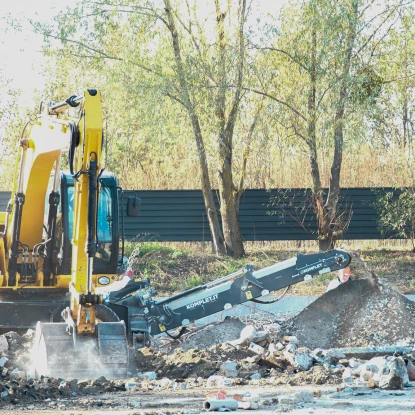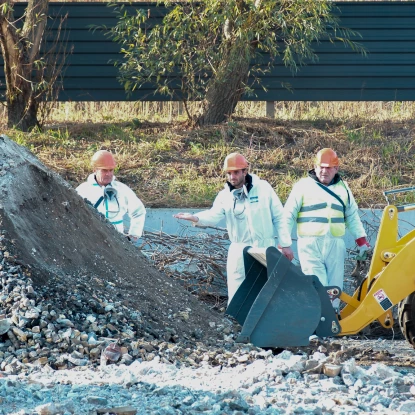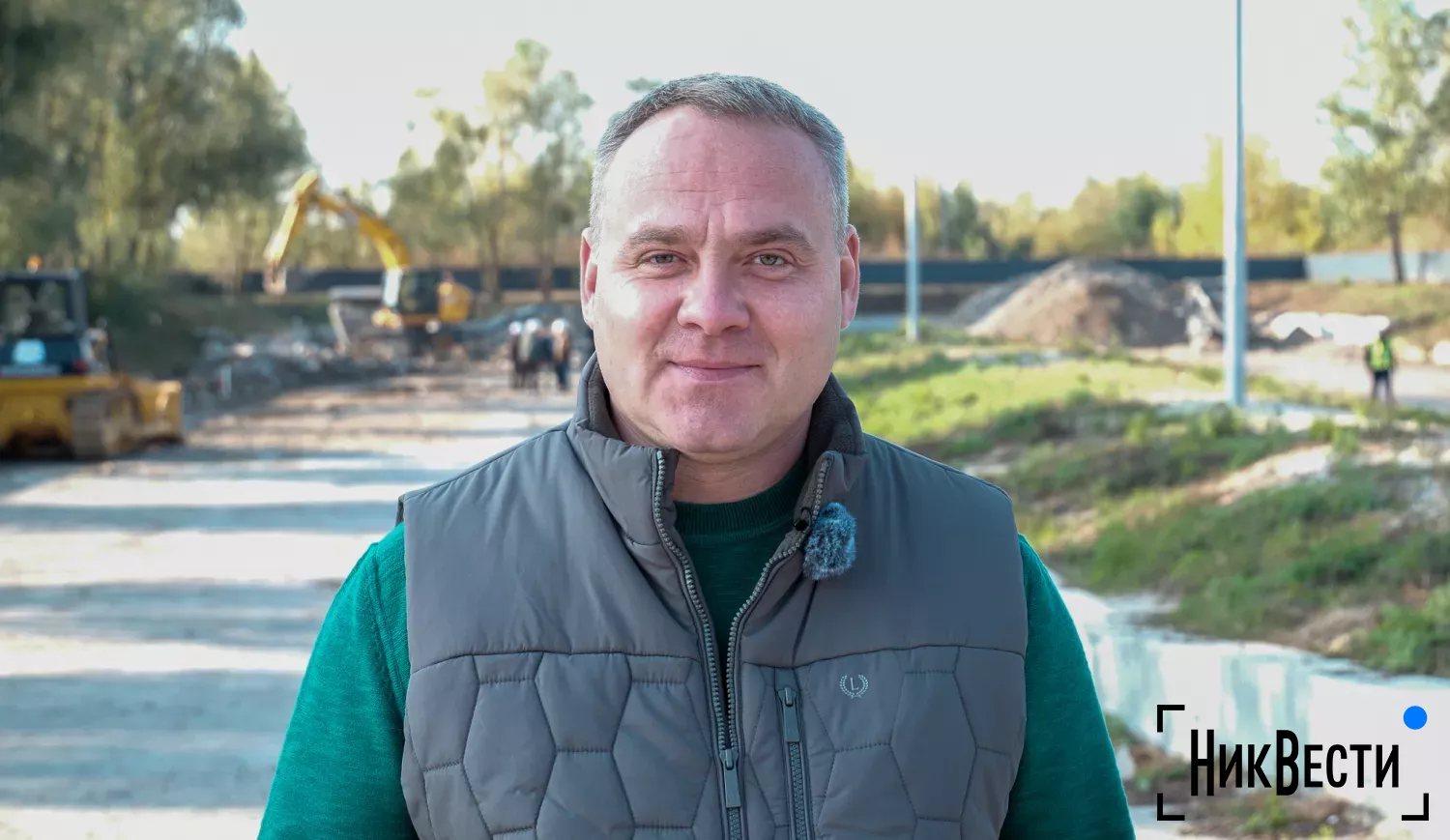When the construction waste processing station will start operating in Mykolaiv: what is delaying the process
-

- Olena Kozubovska
-
•
-
19:00, 30 October, 2024
Mykolayiv region is one of the regions of Ukraine most polluted by waste due to destruction. Discussions on the creation of a construction waste processing station in Mykolaiv have been going on for the second year. In May 2024, the mayor Oleksandr Sienkevych announced that the Japanese company JICA plans to build a construction waste processing plant in Mykolaiv. At the same time, the city received the first equipment for 1 million hryvnias from the partners.
Later, the United Nations Development Program in Ukraine also took over technical support and provided part of the necessary equipment for the creation of a waste sorting and processing station, including excavators and crushers.
They decided to entrust the construction and further operation of the site to the utility company ELU Avtodorig.
What is delaying the construction of the station in Mykolaiv
Representatives of the UN Development Program in Ukraine to Mykolaiv in September 2024 said that the sorting station in Mykolaiv should be operational by the end of the current year. In the comment NikVesti, the head of ELU Avtodorig Vitalii Shevchenko even announced the date — December 20, but complications arose.
As it turned out, the site allocated to the enterprise for deployment of the processing station is littered with unexploded ammunition.
The employee of the utility company, the project manager Oleh Rudenko told the journalist NikVesti that the company is waiting for the completion of demining. According to him, as soon as the team of sappers completes the work on the site, the specialists of the enterprise will start deploying the station.
«Our deadlines are set in such a way that we want to do something in December, but the delay is due to demining. As soon as we are given permission to enter the territory, we will immediately start work, we have everything ready, the equipment is waiting,» he explained.
Vitalii Shevchenko, director of ELU Avtodorig, added that explosives technicians have been working on demining the site for the installation of the station for about a month and a half, and they promise to complete the work in a few weeks.
«According to the schedule, we planned to start launching the site somewhere on December 20, but before the start of setting up the site, sappers found a large number of unexploded shells. Demining has been going on for over a month and a half, it will be finished in about two to three weeks, after which we will start arranging the site,» he said.
In July 2024, the housing and communal services department of the Mykolaiv City Council reported that about 60 million hryvnias would be needed to arrange a site for the processing of construction waste generated as a result of shelling of Mykolaiv. This year, according to the calculations of the utility company ELU Avtodorig, 40 million 735 thousand hryvnias are needed for these needs. However, according to the director of the utility company Vitalii Shevchenko, as of October 2024, the company has not received the funds.
Undoubtedly, the lack of funds delays the process of arranging the station. According to Vitaliy Shevchenko, they will not be able to start the station in full as planned by the project. However, he said that in December, the company plans to equip the site with the necessary materials that protect the soil from the ingress of harmful substances from the processing of construction waste and to launch several units of equipment. Vitalii Shevchenko says that in the course of work, the company plans to equip the station with recycled construction materials.
NikVesti turned to Dmytro Bezdolnyi, director of the housing and communal services department of the Mykolaiv City Council, for a comment. He said that, in fact, the money for starting the processing station was allocated back in July — 10 million hryvnias. However, the company has not yet received the funds, the receipt of funding is expected by the end of the year.
«It was at the July session of the City Council, but in fact the funding is due at the end of this year. The numbers on paper that are allocated are one thing, and the finances that come to the city are another. The company has not yet received this money physically. But we will look for opportunities so that this money will go to them in November. Currently, what is already planned for launch will be done internally by the company and for the 10 million that should come. other needs, unfortunately, are still unfunded due to a lack of funds,» said Dmytro Bezdolnyi.
Powers of the future station
According to the head of the project Oleh Rudenko, the equipment, which was transferred by partners from Japan and UNDP, will allow processing up to 350 tons of materials per day.
«We have equipment that processes up to 16 mm of reinforcement in concrete, another — a slightly larger fraction. It can perform very large volumes of work per day, our station can process up to 350 tons per day,» he says.
The director of the utility company said that according to the developed project, in the future the station will have two zones: one for the processing and sorting of raw materials, the other for the production of building materials from it, in particular curbs and wells. The total area of the site allocated for the arrangement of the sorting station is about 10 hectares.
To implement the project, ELU Avtodorig has currently received technical equipment in the amount of about 5 million euros, by March the company expects new equipment deliveries from Japanese partners in the amount of another 3 million euros.
However, taking into account even the maximum capacity of processing, according to Vitalii Shevchenko, it will take at least three years to dispose of the construction waste that has accumulated in Mykolaiv since the beginning of the full-scale invasion.
«More than 2,000 residential buildings were damaged in the city, including large high-rise buildings and private homes, as well as destroyed schools and other buildings. The amount of debris created after the destruction is approximately 120,000 tons, and this is only what was declared. Even such a volume cannot be processed and sorted on this equipment in six months. Unfortunately, the amount of waste is constantly increasing, we need from 3 to 5 years to process everything,» he noted.
Asbestos: consequences for human health
One of the key tasks of processing stations is the sorting of asbestos-containing substances from other construction waste. Asbestos is a natural mineral that consists of fibrous structures and is used in construction due to its high resistance to heat, fire and chemical influences. In building materials such as slate and thermal insulation, asbestos acts as a component to increase strength and fire resistance.
However, asbestos carries serious risks for human health. When asbestos-containing materials are damaged or decomposed, microscopic fibers are released into the air, which can lead to dangerous diseases, including cancer.
«All the danger lies in asbestos-containing materials, because Ukraine has a hundred years of experience in their use. According to official statistics, 70% of all buildings in Ukraine are covered with slate, and according to unofficial data, up to 95%. In addition, these are not only roofs, but also fences, garbage pipes, water supply systems, chimneys. In general, the situation in Ukraine is plus or minus the same,» said UNDP hazardous waste analyst Denys Pavlovskyi.
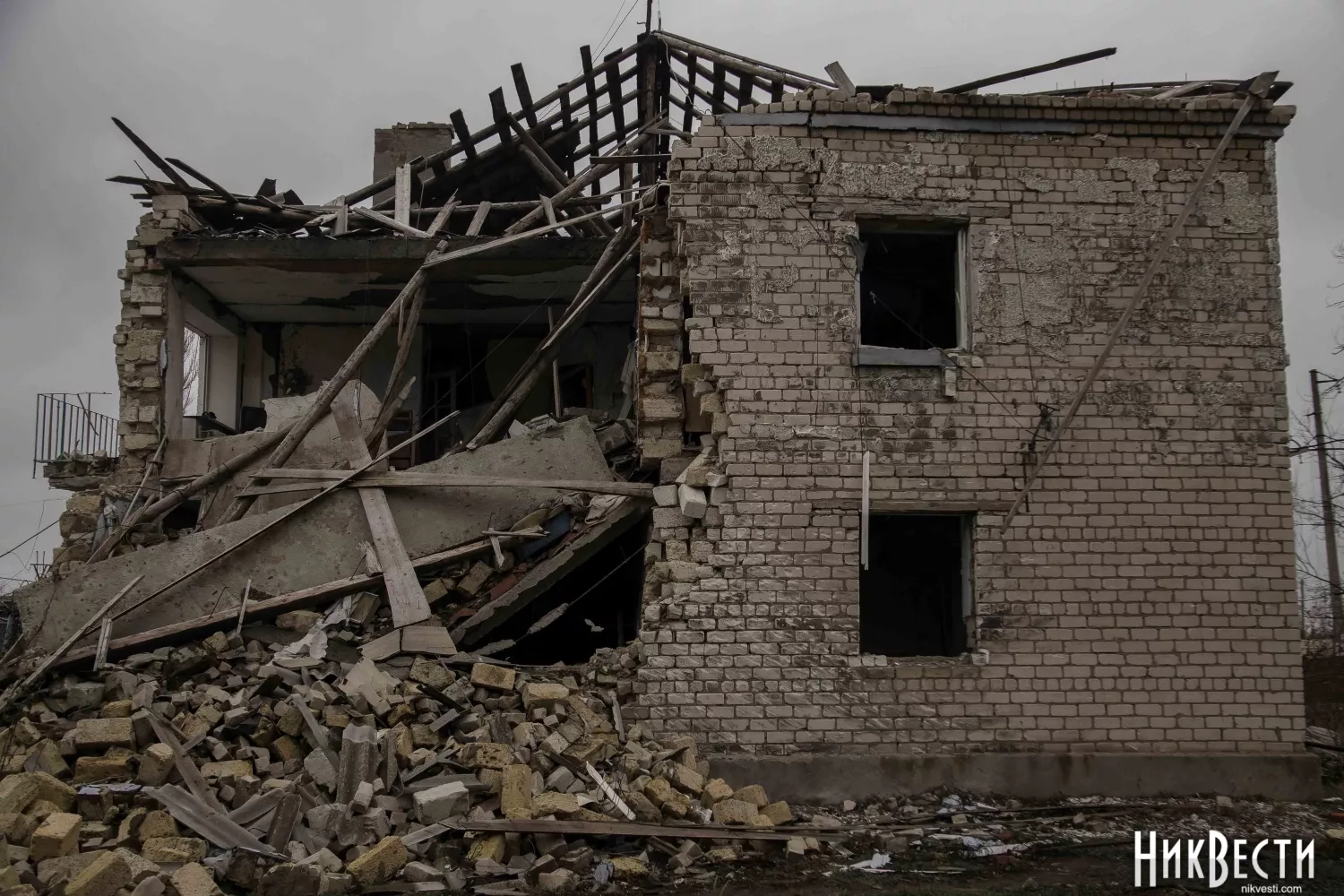 About 120,000 tons of construction waste accumulated in Mykolaiv. Archive photo of NikVesti for illustration
About 120,000 tons of construction waste accumulated in Mykolaiv. Archive photo of NikVesti for illustrationAccording to him, asbestos is not dangerous under normal conditions, when, for example, it is concreted in slate or other building materials. But if such materials enter the crusher, the dust from their processing can have serious consequences for human health.
«Our task is to remove these materials from the total amount of waste and properly dispose of them. The best disposal practice is packaging in special containers and landfilling. The greatest danger lies in asbestos fibers that are released when such materials are mishandled, even one fiber is enough for a person to inhale and eventually get lung cancer,» explained Denys Pavlovskyi.
What is the situation with asbestos in Mykolaiv Oblast?
Vitalii Shevchenko, director of the utility company ELU Avtodorig, notes that asbestos is more common in rural areas, because slate was used there to cover roofs.
«We have much more asbestos in our villages, as private houses were often covered with slate. There is not much of it in the city, because more modern materials are used there. We will deal with the selection and disposal of such materials,» he emphasized.
According to him, for the safe processing of waste at specialized sites, employees will receive training from UNDP. This will allow them to work effectively with asbestos-containing materials, reducing risks to health and the environment.
«We will conduct several trainings and teach our employees how to properly handle asbestos-containing materials,» added Vitalii Shevchenko.
Although asbestos is considered particularly dangerous, its content in Mykolaiv is not as significant as in eastern or northern regions of Ukraine.
«We have other materials, many houses with a soft roof that does not contain asbestos. There is slate, but in smaller quantities,» said Vitalii Shevchenko.
Sorting station in Bucha as an example for Mykolaiv
In mid-April 2024, the sorting station in Bucha began its work — one of the first construction waste processing stations in Ukraine.
The 40,000-square-meter temporary waste storage site created after the community's deoccupation held about 75,000 cubic meters of waste, including demolition waste, household waste, and hazardous waste, such as asbestos-containing waste, which required sorting.
As of October 15, 2024, KP employees, with the help of a contractor hired by UNDP, sorted all waste at the storage site.
On October 23, NikVesti visited the demolition waste processing station in Bucha and talked with the director of the communal enterprise «Buchaservice» Serhii Mostipaka, who told about the work of the station and the terms of its arrangement.
«We go to the location, destroy, assemble and take it to a temporary site. We managed to equip the station in about a month,» he notes.
In cooperation with a local private enterprise, the station sorts and selects for reuse plastic, metal, glass and rubber. Large boulders and reinforced concrete debris are broken with a hammer and then loaded into a crusher.
«We use construction materials to repair roads. We've already used everything we've broken up. We recycled everything and cleaned up the landfill. The installation of the station took a maximum of a month, and the cleaning of the landfill began in the winter, and we finished at the end of autumn,» says the head of the enterprise.
According to Mykolaiv officials, Bucha's experience demonstrates how to effectively organize work with waste. However, they note that the situation in Mykolaiv is much more complicated, in particular due to a much larger amount of destruction and, accordingly, construction waste. According to Vitalii Shevchenko, the site in Bucha is indicative in terms of organizational processes, but not in the context of opportunities, as the recycling station in Mykolaiv is planned to be larger both territorially and in terms of equipment capacities.
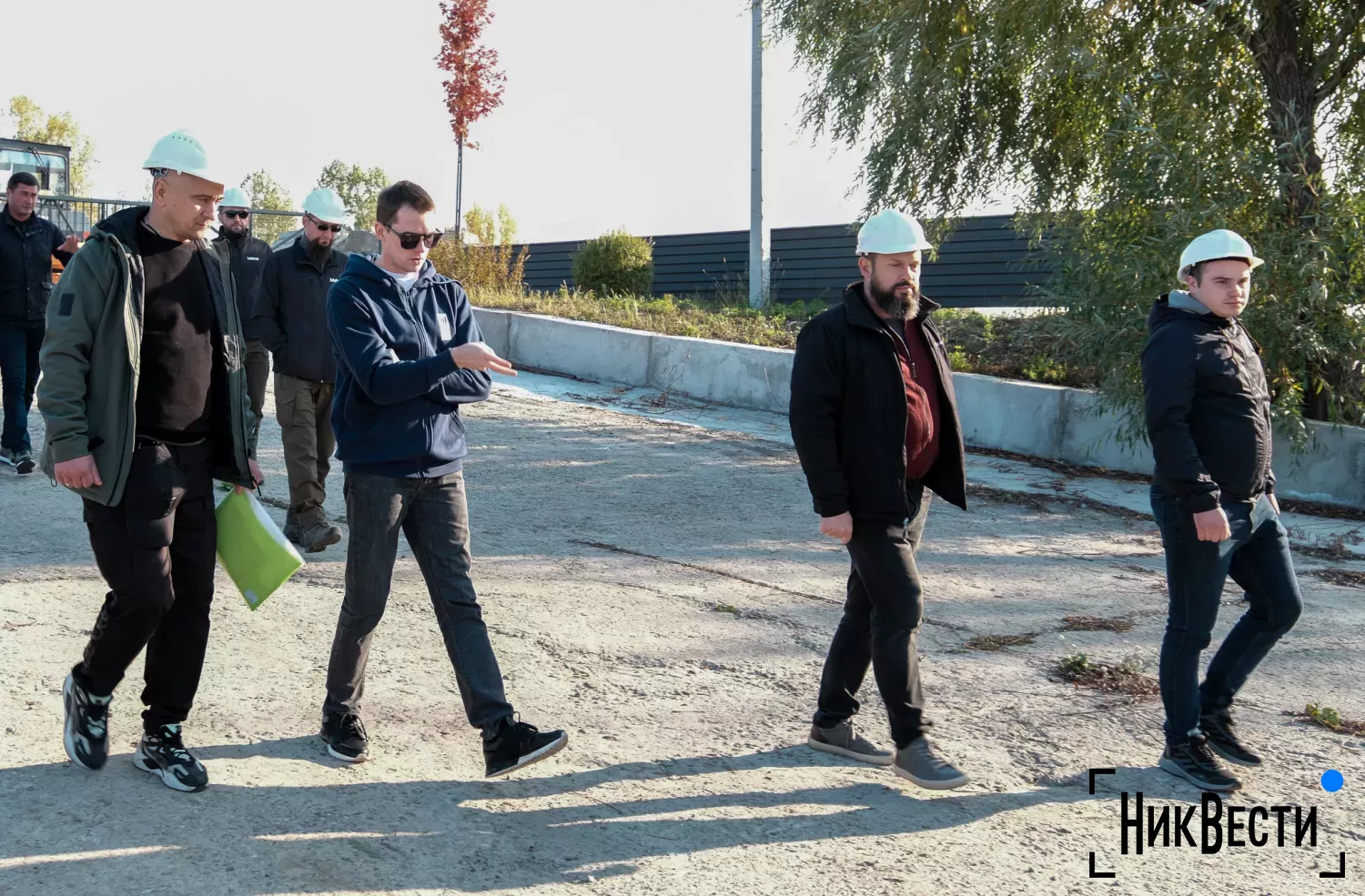 Vitalii Shevchenko and Oleh Rudenko visited the construction waste processing station in Bucha. Photo NikVesti
Vitalii Shevchenko and Oleh Rudenko visited the construction waste processing station in Bucha. Photo NikVestiWhere are they storing demolition waste in Mykolaiv
It should be noted that during 2023, five temporary storage sites for demolition waste were identified in the Mykolaiv region. However, most of the construction waste today is stored at the Velyka Korenyha solid waste landfill near Mykolaiv, which was 98% exhausted in 2018.
Before the full-scale war, in 2020, in the comment NikVesti, the mayor of Mykolaiv, Oleksandr Sienkevych, announced that the city's current solid waste landfill will last another 10 years of work, that is, until 2030. Although the landfill was put into operation in 1972 with the calculation of work — 50 years, that is, until 2022.
Since the Mykolaiv region is near the front, constant shelling and destruction lead to an increase in the amount of construction waste that needs to be disposed of. This, in turn, creates new environmental challenges for the region, because untimely waste processing can lead to environmental pollution, deterioration of air and water quality, and also threatens the health of local residents.
Without proper control of construction waste and its disposal, the region may face serious environmental consequences that will only deepen the existing problems. Therefore, it is important to resolve these issues as soon as possible in order to ensure the proper operation of the station and reduce the negative impact on the ecology of the Mykolaiv region. Without active action on the part of local authorities, these opportunities may remain unused, and the situation will only worsen. Improving the environmental situation in the city requires not only the availability of technical resources, but also a clear strategy on the part of local managers.
Olena Kozubovska, NikVesti

The work on this material became possible thanks to the Fight for Facts project, which is implemented with the financial support of the Federal Ministry of Economic Cooperation and Development of Germany.


